
OnePlus just marked its 10th anniversary by announcing the OnePlus 12 earlier this month , marking the company’s 11th flagship series (the 4 was skipped for cultural reasons). While the phone has yet to venture outside of China, we’re already expecting it to cause strong undulation in the market thanks to its top-notch hardware, superfast wired and wireless charging, and a remarkable display.
- OnePlus 12 vs. Pixel 8 Pro: specs
- OnePlus 12 vs. Pixel 8 Pro: design
- OnePlus 12 vs. Pixel 8 Pro: display
- OnePlus 12 vs. Pixel 8 Pro: performance
- OnePlus 12 vs. Pixel 8 Pro: battery and charging
- OnePlus 12 vs. Pixel 8 Pro: cameras
- OnePlus 12 vs. Pixel 8 Pro: software and updates
- OnePlus 12 vs. Pixel 8 Pro: special features
- OnePlus 12 vs. Pixel 8 Pro: price and availability
- OnePlus 12 vs. Pixel 8 Pro: verdict
With these features on board, the OnePlus 12 is expected to be pitted against the Pixel 8 and the Apple iPhone 15 series in the U.S., with the Google Pixel 8 Pro especially making sense if you want a feature-packed Android phone. In case you are already looking for a new Android handset to buy in early 2024, our comparison between the OnePlus 12 and the Pixel 8 Pro should help set your expectations well before the former launches globally.
OnePlus 12 vs. Pixel 8 Pro: specs
| OnePlus 12 | Google Pixel 8 Pro | |
|---|---|---|
| Size | 164.3 x 75.8 x 9.2mm (6.46 x 2.98 x 0.36) | 162.6 x 76.5 x 8.8 mm (6.40 x 3.01 x 0.35 in) |
| Weight | 220 grams (7.76 ounces) | 213 grams (7.51 ounces) |
| Screen |
|
|
| Operating system | OxygenOS 14 based on Android 14 (expected) | Android 14 |
| RAM & Storage |
|
|
| Processor | Qualcomm Snapdragon 8 Gen 3 | Google Tensor G3 |
| Camera |
|
|
| Video |
|
|
| Connectivity |
|
|
| Ports | USB-C Gen 3.2 | USB-C Gen 3.2 |
| Water resistance | IP65 | IP68 |
| Battery & charging | 5,400mAh with 100W SupeVOOC wired fast charging and 50W wireless charging | 5,050mAh with 30W wired fast charging and 23W wireless charging |
| Colors | Black, Silver, Green | Obsidian black, Porcelain white, Bay Blue |
| Price | Starting at CNY 4,299 ($605) | Starting at $799 |
OnePlus 12 vs. Pixel 8 Pro: design
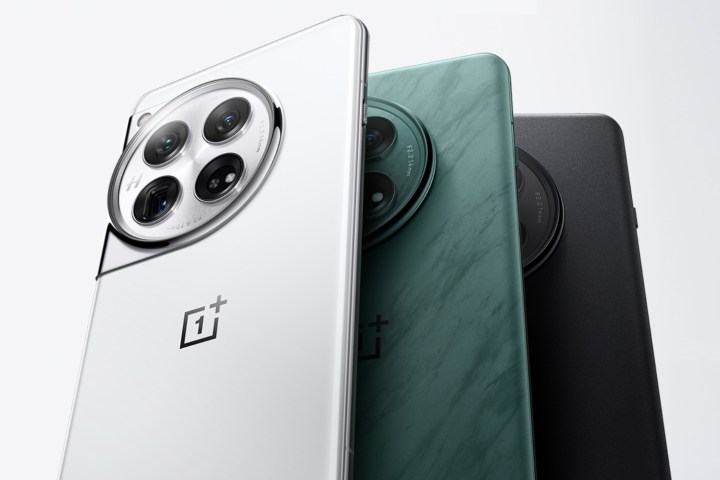
The OnePlus 12’s design doesn’t differ much from the OnePlus 11, with the identical circular camera bay and curved edges on the glass back. The only minor changes include a slightly more padded camera bump — probably to accommodate a bigger telephoto setup — and the new position of the alert slider on the left edge of the phone instead of the right one. Without observing these phones more closely, you couldn’t tell the two phones apart.
To ease the differentiation, OnePlus has also introduced a new version of the green color with a wavy texture under the glass, similar to the Marble Odyssey edition of the OnePlus 11. Other than that, a new white-silver color joins the pack while the black from last year remains. We are unsure which of these will be limited to China.
The OnePlus 12 is also marginally heavier, now weighing 220 grams (7.76 ounces) compared to the 205g (7.23 ounces) from last year. The phone also gets thicker, presumably to accommodate a larger battery.
Like the OnePlus 11, the OnePlus 12 also skimps on absolute ingress protection. It comes with an IP65 rating, which means that while the openings on the OnePlus 12 are protected from fine dust (but not coarse materials like sand), there is no waterproofing. The “5” in the rating signifies that the phone can only sustain light splashes and rain and cannot be submerged in water. While an improvement over the OnePlus 11, the rating does not match up to other flagships, which come with far superior water resistance.
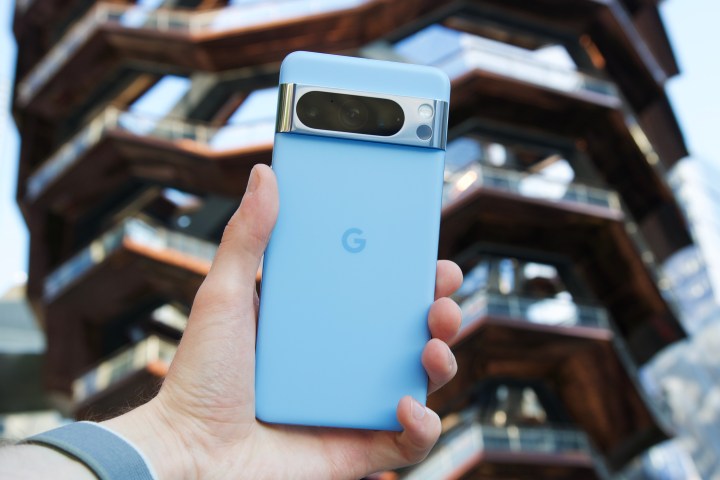
Meanwhile, the Pixel 8 Pro has a more solid design, with Gorilla Glass Victus 2 protecting both the front and the back. It retains the pill-shaped camera on the back while moving to a flat display on the front compared to a curved display on the Pixel 7 Pro (as well as the OnePlus 12). The Pixel 8 Pro also features rounder corners than its previous generation and comes in three colors — “Bay” blue, “Obsidian” black, and “Porcelain” (off-white) — with stainless steel frames in corresponding undertones. The stainless steel also runs along the camera bump, giving it slightly better durability against accidental drops than the all-glass camera bump on the OnePlus 12.
Physically, the Pixel 8 Pro measures and weighs nearly the same as the OnePlus 12. However, it comes with an IP68 rating, translating to its ability to stay 1.5 meters (roughly 5 feet) under freshwater for up to 30 minutes. This means you can shoot videos underwater, so long as you don’t take the Pixel 8 Pro near the ocean.
Despite a more iconic and head-turning design on the OnePlus 12, the Pixel 8 Pro feels better equipped to serve you in the longer run, thanks to its more durable build. It, therefore, is the winner of this category.
Winner: Google Pixel 8 Pro
OnePlus 12 vs. Pixel 8 Pro: display
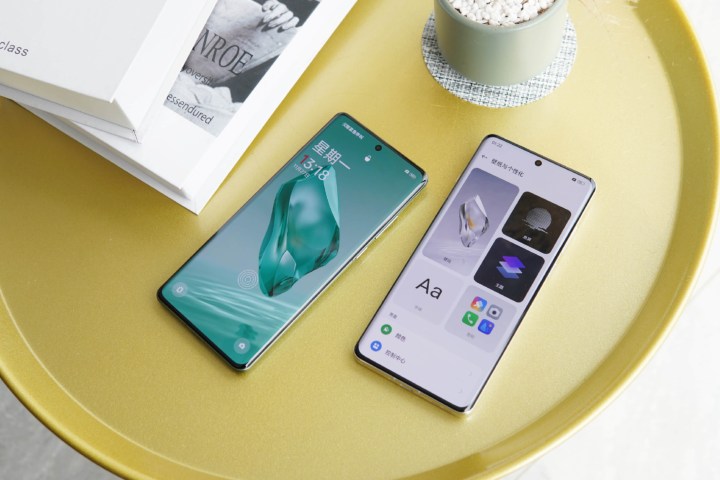
The OnePlus 12 gets a 6.82-inch AMOLED panel with a remarkable 1440 x 3168 pixel resolution. The screen also supports LTPO technology, allowing it to function at refresh rate intervals between 1Hz and 120Hz. The display, like on previous OnePlus flagships, is curved along the longer edges.
OnePlus makes bold claims about the display, including a 4,500 nits peak brightness. However, it is essential to note that peak brightness only denotes the brightness of the brightest pixels while watching video content with HDR. For regular viewing, OnePlus claims a brightness of 1,600 nits using the High Brightness Mode, which is triggered under powerful direct light or sunlight or when adjusting the brightness manually. Based on some early leaks, the OnePlus 12’s real-world brightness is on par with the claims.
OnePlus also claims to have added “medical grade” measures to reduce eye strain. This is achieved by using a high pulse-width modulation (PWM) frequency of 2,160Hz — a technique that is growing popular with brands such as Honor and demonstrates how high PWM can be the key to reduced eye strain, especially while using a phone in lowlight. We would, however, take the “medical grade” claim with skepticism until OnePlus gets approval by the Food and Drug Administration (FDA) or a comparable authority.
OnePlus also claims the “Rain Water Touch” technology lets you interact with the display even with wet hands.

Meanwhile, the Pixel 8 Pro comes with a slightly smaller 6.7-inch display. Since the two phones have a similar footprint, a smaller display equates to larger display bezels. As mentioned above, the Pixel 8 Pro features a flat display compared to the curved display on the OnePlus 12 — the choice between the two boils down to subjective preferences.
Like OnePlus, Google also claims a high brightness for its displays, with a slightly lower 1344 x 2992 resolution. The usual number is 1,600 nits under the High Brightness Mode (HBM), with a peak brightness of 2,400 nits. The display is bright and highly palatable in all scenarios, including outdoors.
Notably, the Pixel 8 Pro lacks Dolby Vision support and is limited to a similar, less popular HDR codec: HDR10+. This simply means much of your Netflix content intended for displays with Dolby Vision will default to the open source — and inferior — HDR10 codec (and not HDR10+), resulting in darker scenes than on the OnePlus 12. However, on apps such as Apple TV and Amazon Prime Video, which support HDR10+ alongside Dolby Vision, the viewing experience will be similar, if not identical.
Lastly, while the Pixel 8 Pro’s AMOLED panel also comes with LTPO technology. The Pixel lacks active controls to switch between different supported refresh rate values or force 120Hz across all apps, making it slightly less appealing.
Winner: OnePlus 12
OnePlus 12 vs. Pixel 8 Pro: performance

The OnePlus 12 is among the earliest devices running Qualcomm’s latest Snapdragon 8 Gen 3 chipset, none of which have launched outside competitive markets such as China and India. The OnePlus 12 may be the first phone with the chipset to launch in the U.S. However, based on the schedule from earlier in 2023, there are equal chances Samsung might beat it by announcing the Samsung Galaxy S24 series first.
The Snapdragon 8 Gen 3, unveiled earlier than usual this year, brings notable upgrades over the Gen 2. These include a remodeled CPU configuration with one prime core, four performance cores (instead of a 2+2 arrangement in previous generations), and two efficiency cores. Qualcomm claims 30% better CPU and 25% better GPU performance.
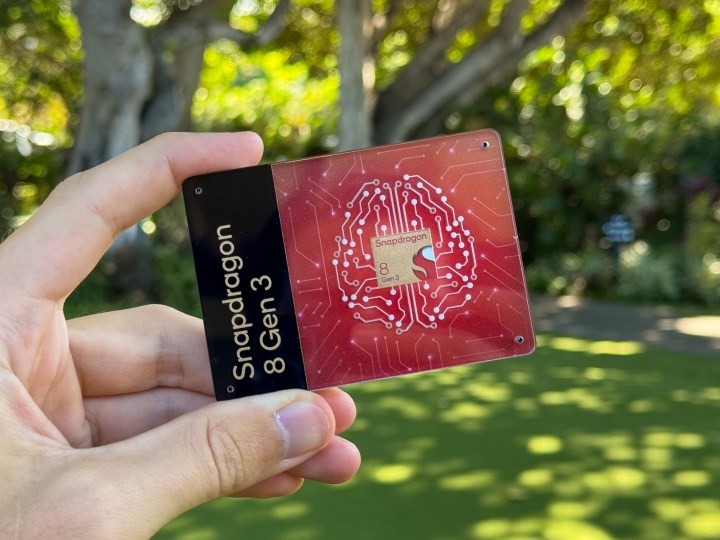
The new chipset is most notable for its AI-related capabilities, with a 98% improvement in neural processing and significantly faster processing using generative AI models. The generative AI applications are not limited to text or images; they will also support speech, allowing you to converse with an AI chatbot in real time, which Qualcomm demonstrated at the Snapdragon Summit using the Llama 2 model by Meta. Most importantly, all of the processing will happen on device, i.e., without being offloaded to an online data center — something that was previously exclusive to devices with Google’s Tensor-branded chips. Other AI chops allow phones with the Snapdragon 8 Gen 3 to use Adobe Photoshop-like generative fill that creates parts of the image using text-based inputs.
It’s unclear which of these features will actually make it onto new phones with the Snapdragon 8 Gen 3, such as the OnePlus 12. Creating wallpapers is yet another potential use case. While the hardware is ready, smartphone companies, including OnePlus, will also have to integrate these features into the software.
OnePlus takes a significant leap by adding up to 24GB of RAM and 1TB of UFS 4.0 storage. These features make up for the lack of jaw-dropping upgrades in other areas and will ensure the device’s longevity. It’s difficult to say if these will remain exclusive to China or make their way into global markets as well.
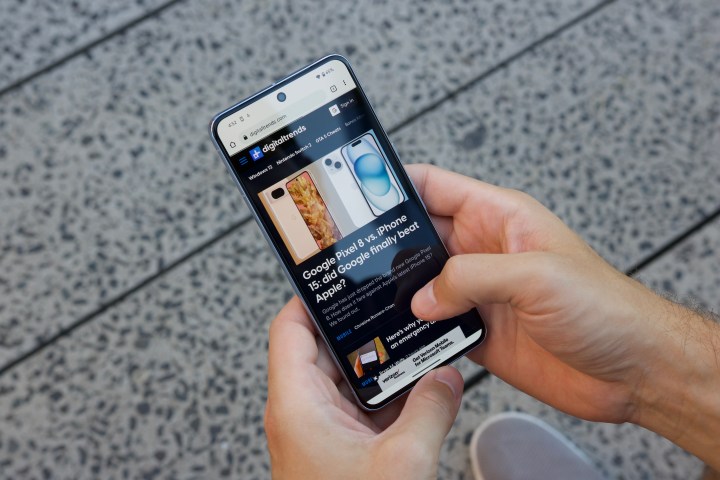
The Pixel 8 Pro, on the other hand, is powered by a Google Tensor G3 chipset, designed in tandem with Samsung. The chip uses a CPU and GPU comparable to the Snapdragon 8 Gen 2 — Qualcomm’s flagship chipset from last year. Based on synthetic benchmark tests we performed earlier in 2023, the Pixel 8 with the Tensor G3 is outperformed by the OnePlus 11 running the Snapdragon 8 Gen 2. Therefore, expecting a better performance than the newer Snapdragon 8 Gen 3 is out of the question. Google offers 12GB RAM as standard across all variants of the slower UFS 3.1 storage, ranging from 128GB to 1TB.
With more advanced AI research, Google has an upper hand regarding AI features on the Pixel devices. With the improved dedicated AI chip, called a Tensor Processing Unit, on the Pixel 8 Pro, camera features such as Magic Editor and Best Take are significantly refined. Google interactive chatbot Bard now powers interactions with Google Assistant while the improved TPU allows for Face ID-level security using Face Unlock on the Pixel 8 Pro, even without the dedicated sensors that the iPhone uses.
Google also recently started upgrading its apps to run on a condensed version of its most powerful machine learning model, Gemini, which is equivalent to OpenAI GPT-4. This condensed version, known as “Gemini Nano,” now powers Smart Replies, Gboard suggestions, and automatic transcription in the Recorder app, with more apps to be added to the roster soon. While Gemini Nano is part of Android 14, Pixel 8 Pro and future Pixel devices will run these AI applications right off the chipset.
Despite lagging in performance, the Pixel 8 Pro has a clear advantage in AI applications, thanks to a chipset specifically designed for the phone (instead of the generic Snapdragon). Meanwhile, Google’s direct control over Android allows it to steer trends in its favor while forcing other manufacturers, such as OnePlus, to comply.
Given their performance abilities, both phones are expected to run hot. The Tensor lineup has a bad reputation for heating up excessively. While the Pixel 8 Pro proves to be better than previous phones, it is still prone to some issues. Meanwhile, the Snapdragon 8 Gen 3 has yet to be extensively tested on its thermal efficiency.
Winner: Tie
OnePlus 12 vs. Pixel 8 Pro: battery and charging
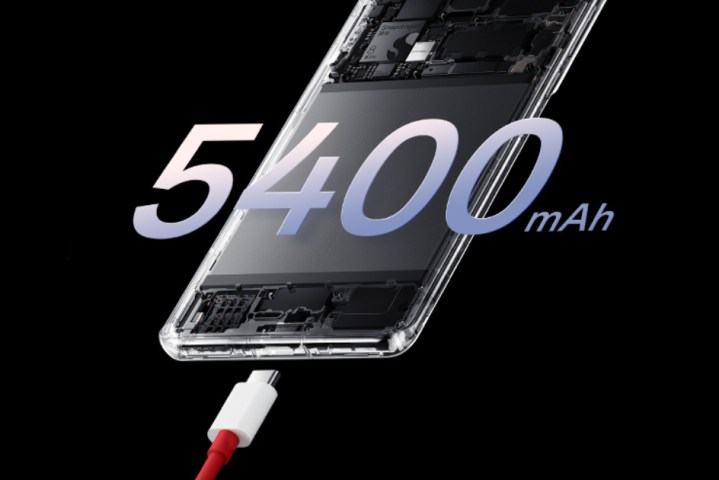
OnePlus is among the earliest brands to standardize and popularize fast charging, and the OnePlus 12 is no exception. It comes with a large 5,400mAh battery (about 7.5% larger than that of the OnePlus 11), with support for up to 100-watt fast charging, which is claimed to charge the phone fully in less than 30 minutes. Due to differences in power voltage in the U.S., we might see that being limited to 80W, just like with the OnePlus 11.
The OnePlus 12 also comes with 50W wireless charging — a welcome change from the OnePlus 11, which lacked wireless charging support entirely. Since this is faster than the standard Qi or Qi2 protocols, fast wireless charging will rely on OnePlus’ proprietary technology. The phone also supports up to 10W reverse wireless charging for accessories such as earphone cases.
In comparison, the Pixel 8 Pro comes with a smaller 5,050mAh battery. While the battery’s capacity isn’t insignificant, the Pixel 8 Pro lacks in charging speeds, supporting only up to 33W of wired and 23W of wireless charging. As a result, the Pixel 8 Pro charges much more slowly, taking over an hour to go from 0 to 100% battery.
Winner: OnePlus 12
OnePlus 12 vs. Pixel 8 Pro: cameras
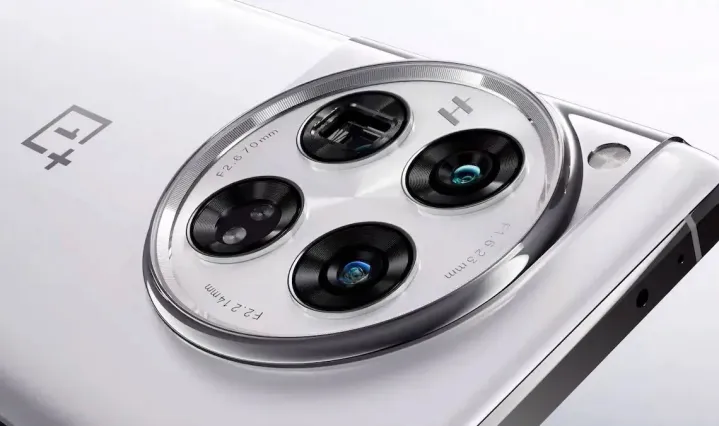
The OnePlus 12 gets three rear cameras, just like the OnePlus 11. However, the sensors see a notable upgrade over the previous generation. First, the primary 48MP camera now uses an LYT-808 sensor from Sony’s new Lytia series, which succeeds the previous IMX range. The sensor is also seen on the OnePlus Open, and its highlights include the new design that allows for better absorption of light despite a smaller footprint. This, in turn, is expected to help with better lowlight photography.
The other two rear cameras are the same as those on the OnePlus Open, including a 48MP ultrawide and a 64MP telephoto sensor. This is the first OnePlus slab phone to use a periscope setup for the telephoto camera, allowing for brighter long-range shots. Besides new sensors, the cameras also benefit from color tuning by the camera brand Hasselblad. Images from the OnePlus Open convince us of the capabilities of the new Lytia sensor, and the improved image signal processor (ISP) on the Snapdragon 8 Gen 3 is only expected to make things better. However, expecting the same level of detail you see from the Galaxy S23 Ultra or the iPhone 15 Pro may lead to disappointment.
Where the OnePlus 12 really stands apart is its ability to record videos with Dolby Vision. You can also switch to LOG if you want to master the color output at the editing stage.
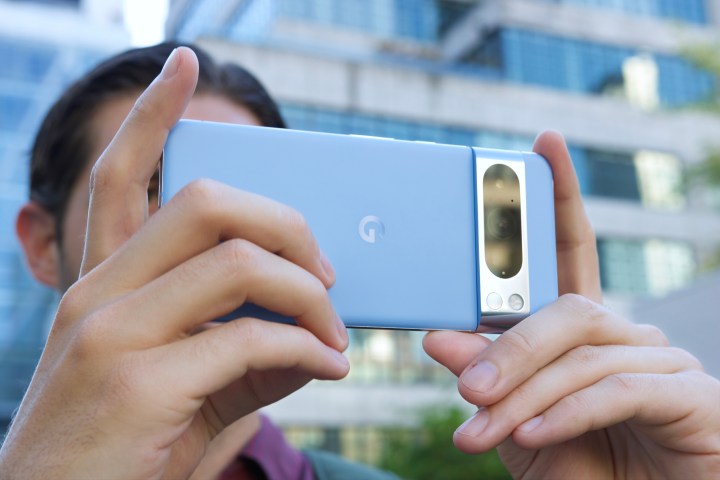
Meanwhile, the Pixel series earns its name from its impressive camera capabilities. While Google appeared to have lost track of the lackluster cameras on the Pixel 5 (it used the same sensor as the first Pixel), things have improved greatly since. Even though the Pixel 8 Pro continues to use the same 50MP sensor as the Pixel 6 Pro, general upgrades to the software paired with improved AI capabilities make it one of the best cameras on the market.
The Pixel 8 Pro takes consistently good photos and even edges out the iPhone 15 Pro in a direct comparison. Besides the impressive 50MP primary camera, the 5x telephoto with AI-based enhancements to zoomed-in scenes makes it much better for long-range shots. AI features such as Best Take improve the camera experience further.
For selfies, while the OnePlus 12 gets a 32MP sensor, the Pixel 8 Pro aims for sharper images through autofocus on the front camera. For these reasons, we expect the Pixel 8 Pro to win this one, but will be sure to compare the two devices once we have the OnePlus 12.
Winner: Google Pixel 8 Pro
OnePlus 12 vs. Pixel 8 Pro: software and updates
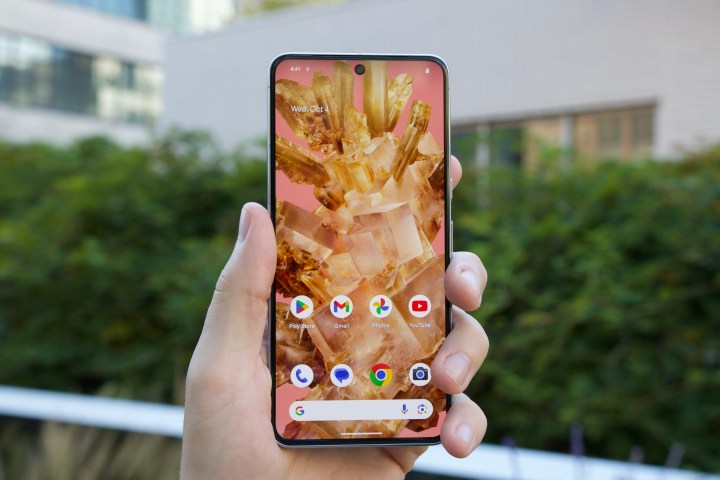
Lines between OnePlus’ OxygenOS Android interface and Oppo’s ColorOS have been blurring since the two companies merged back into one. In fact, OnePlus phones in China, including the OnePlus 12, run ColorOS. However, the international model will run OxygenOS, albeit with only subtle differences from Oppo’s interface.
Since OxygenOS 14, based on Android 14, has already begun rolling out for the OnePlus 11 and a few other devices, we expect the OnePlus 12 to also come with OxygenOS 14 out of the box. OnePlus usually offers four Android version upgrades for its flagships, so the same can be expected for the OnePlus 12.
The Pixel 8 Pro launched with Android 14 and a custom “Pixel experience” interface with special features over the vanilla, open-source version of Android. Besides prompt and monthly updates for all Pixel devices, Google specifically promised seven years of software updates for the Pixel 8 Pro, which will keep the phone alive for much longer than the OnePlus 12 — unless the hardware becomes too old to run future versions of Android before that. For this reason, the Pixel takes the win.
Winner: Google Pixel 8 Pro
OnePlus 12 vs. Pixel 8 Pro: special features
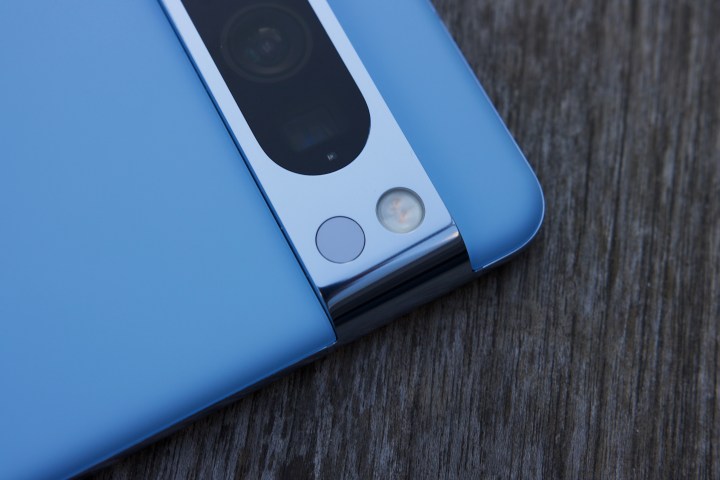
As discussed above, the Pixel 8 Pro is designed with the AI age in mind. It benefits from Google’s prowess in the area, as well as its ability to tune the Android interface better than any other Android phone manufacturer. Google is also making room for third-party developers to benefit from the AI capabilities of new-age chipsets with its “AICore” packages, and the Pixel unquestionably will remain the first beneficiary of these advancements.
These AI capabilities powered by the dedicated Tensor Processing Unit allow superior face unlock on the Pixel 8 Pro, on par with the 3D Face ID sensors on the iPhone. the Pixel 8 Pro also comes with a temperature sensor built into the camera module. While Google does not endorse specific use cases, you can have fun with this sensor at your disposal.
Meanwhile, the OnePlus 12’s astonishing claims about the brightness are exciting. With Dolby Vision support, which the Pixel 8 Pro lacks, the OnePlus 12 is claimed to hit up to 4,500 nits of brightness, which can be expected to make for a stunning visual experience. However, it is vital to remember that specs do not always translate to real-world excellence, which is why we would like to test the phone before making any strong claims. Meanwhile, the Pixel 8 Pro’s display has already proven to be extremely bright.
Google also promises seven years of Android version updates, longer than any Android phone currently on the market.
Winner: Google Pixel 8 Pro
OnePlus 12 vs. Pixel 8 Pro: price and availability
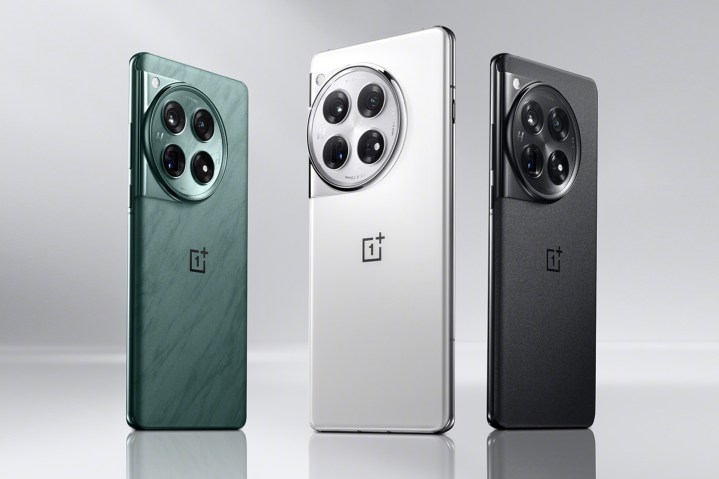
The OnePlus 12 Pro has yet to launch globally and is rumored to arrive in January 2024. In China, it starts at 4,299 yuan, or roughly $605, for the 12GB+256GB variant and goes up to 5,799 yuan (approximately $815) for the 24GB+1TB model. Since global prices are much higher than the direct yuan-to-dollar conversions, we can expect the actual prices in the U.S. to go much steeper.
The OnePlus 11 started at $699 for the 8GB+128GB model at launch. Considering the upgrades the OnePlus 12 packs over the 11, it would be safe to bet on a much higher price — perhaps even $799 for the lowest storage and RAM options.
Even with a higher price than previous models, the OnePlus 12 should be more economical than the Pixel 8 Pro, which starts at $999 for the base 12GB+128GB variant and goes up to $1,399 for the 1TB model. It, however, makes sense if you want a new phone instantly — or want to be your own Santa this holiday season — instead of waiting for a month or two to buy the OnePlus.
OnePlus 12 vs. Pixel 8 Pro: verdict

Both the OnePlus 12 and the Pixel 8 Pro have strong traits that overpower the other in certain areas. The OnePlus 12 has exceptional hardware, superfast charging speeds, and staggering performance. The Pixel 8 Pro has Google’s rich and diverse experience with AI and its ability to use software to reap the maximum potential out of hardware, making it “the best Pixel so far.”
The final choice between the two depends on your preferences. If you desire a sleek phone with dependable performance, surprisingly fast charging, and extra features over stock Android, the OnePlus 12 is the better choice for you. If you want a superior camera and plan to use the same phone over the next several years, the Pixel 8 Pro is worth the plunge.
If you are still on the fence, we hope to clear up some of your doubts early in 2024, when the OnePlus 12 is expected to be available globally.
